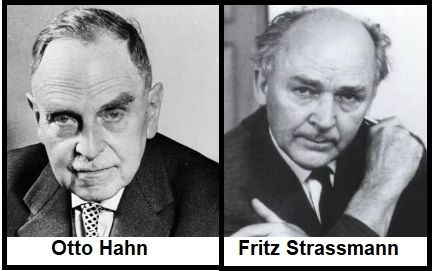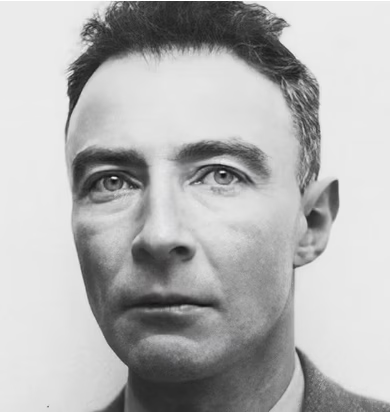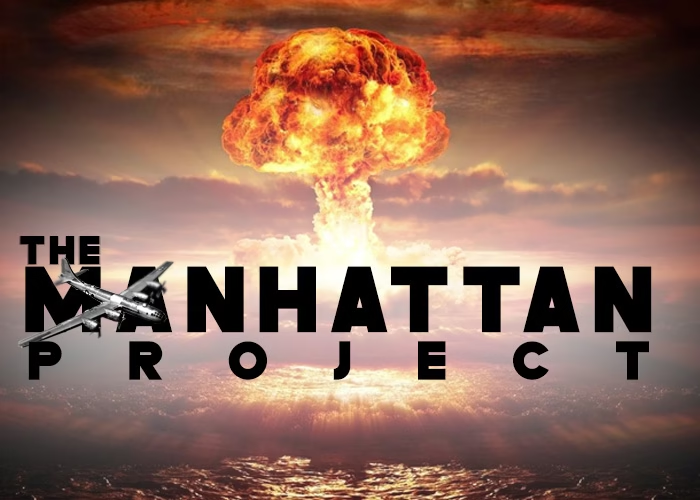The Manhattan Project was one of the biggest scientific and military efforts in history. It led to the creation of nuclear weapons and changed the world forever. Officially started in 1942, it brought together some of the smartest scientists, engineers, and military leaders to build the first atomic bomb. This project helped end World War II but also caused huge destruction and raised serious ethical concerns.
This article covers everything about the Manhattan Project—from its beginnings, key people, important places, and scientific discoveries to its effects on the world, both good and bad.
Why Was the Manhattan Project Created?
Fear of Nazi Germany
In the late 1930s, scientists discovered that splitting an atom releases a huge amount of energy. In 1938, German scientists Otto Hahn and Fritz Strassmann figured out how to do this, raising fears that Nazi Germany might be working on a powerful bomb.

Two famous physicists, Albert Einstein and Leo Szilard, were deeply worried. In August 1939, they wrote a letter to U.S. President Franklin D. Roosevelt, warning that Hitler might develop an atomic bomb first. This letter convinced the U.S. government to take the idea seriously.
How the Manhattan Project Began
Early Research (1939–1941)
After Einstein and Szilard’s warning, the U.S. set up a team in 1939 to study nuclear energy for weapons. At first, funding was small, but as World War II worsened, the U.S. increased its support. In 1941, British scientists who were also working on nuclear research teamed up with the Americans, pushing the project forward.
Official Start and Leadership (1942)
The Manhattan Project officially began on August 13, 1942. It was led by General Leslie Groves, a strict and efficient military officer. He appointed J. Robert Oppenheimer, a brilliant physicist, to lead the scientific research. The name “Manhattan Project” came from the Manhattan Engineer District, where early research had taken place.

Where Did the Manhattan Project Take Place?
The Manhattan Project was not in one place. It had top-secret locations across the U.S.:
Los Alamos, New Mexico (Main Lab)
- Purpose: Build and test the first atomic bombs.
- Key Scientists: J. Robert Oppenheimer, Enrico Fermi, Edward Teller, and Richard Feynman.
- Result: Created the bombs “Little Boy” and “Fat Man”.
Oak Ridge, Tennessee (Uranium Processing)
- Purpose: Make enriched uranium-235 for the bomb.
- Key Facility: Y-12 Plant.
Hanford, Washington (Plutonium Production)
- Purpose: Produce plutonium-239, which was used in the Nagasaki bomb.
- Key Facility: B Reactor, the first large-scale nuclear reactor.
Other Key Locations:
- University of Chicago: Conducted early experiments on nuclear reactions.
- Trinity Test Site, New Mexico: Location of the first atomic bomb test on July 16, 1945.
How the Bomb Worked
The Manhattan Project built two types of atomic bombs:
- Uranium Bomb (“Little Boy”)
- Used Uranium-235.
- Worked by slamming two pieces of uranium together to start a massive explosion.
- Simple design, not tested before it was dropped on Hiroshima.
- Plutonium Bomb (“Fat Man”)
- Used Plutonium-239.
- Needed a complex “implosion” method to explode.
- Tested first in the Trinity Test.
The First Atomic Explosion: The Trinity Test
On July 16, 1945, at 5:29 AM, the world’s first atomic explosion happened in New Mexico. Called the Trinity Test, it created a fireball as bright as the sun and an explosion equal to 20,000 tons of TNT.
Reactions to the Test:
- Oppenheimer famously quoted the Bhagavad Gita, saying, “Now I am become Death, the destroyer of worlds.”
- Military leaders were excited, but some scientists felt guilt and fear over what they had created.
The Bombings of Hiroshima and Nagasaki
Despite debates among scientists and officials, President Harry S. Truman decided to use the bombs on Japan to quickly end the war.
Hiroshima (August 6, 1945)
- Bomb: “Little Boy.”
- Deaths: Over 140,000 people by the end of the year.
- Damage: 80% of the city was destroyed.
Nagasaki (August 9, 1945)
- Bomb: “Fat Man.”
- Deaths: Over 70,000 people.
- Damage: Widespread destruction, but less than Hiroshima due to the city’s landscape.
Japan surrendered on August 15, 1945, officially ending World War II.
The Good and Bad of the Manhattan Project
Good Outcomes
- Ended World War II quickly (preventing a long and deadly land invasion of Japan).
- Led to scientific discoveries (nuclear power, medical treatments, and space exploration).
- Made the U.S. a superpower.
Bad Consequences
- Killed hundreds of thousands of civilians in Hiroshima and Nagasaki.
- Left survivors with severe burns, radiation sickness, and cancer.
- Started the nuclear arms race, leading to the Cold War.
- Created ethical debates over nuclear weapons and war.
Conclusion
The Manhattan Project was a huge scientific and military success, but it also brought mass destruction and fear. It ended World War II, but at a great cost. It introduced nuclear power, but also the risk of global destruction.
The question remains: Was the Manhattan Project a necessary step, or did it create a danger humanity may never control?
Thanks for Reading!
“The power of science can change the world—but whether for good or bad depends on how we use it.”

